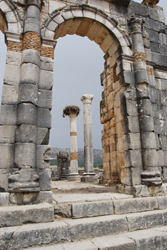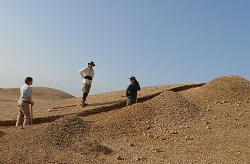A window into ancient history
The area around the Mediterranean basin features some of the most spectacular archaeological sites of our time. Sadly, the socioeconomic pressures bearing down on certain countries have led to neglect of these sites. The EU-funded project 'Preservation of ancient Mediterranean sites in terms of ornamental and building stone: from determining stone provenance to proposing conservation/restoration techniques' (Medistone) studied how three important sites in North Africa can be rehabilitated. These are Djemila in Algeria, the Alexandria lighthouse in Egypt, and Volubilis in Morocco. The project began by identifying the stones and their origin, including former quarry sites where possible. It also diagnosed the condition that the ruins and stones were in and degree of deterioration. This involved a study of factors that could affect the stone such as temperature variations, high winds and other climatic conditions. Once it documented all the background information, Medistone outlined the most ideal conservation and restoration approaches. It sought to address the main challenges of conserving and restoring stone based on European know-how, taking into consideration all the local factors as well. The project successfully identified the stones of the Alexandra lighthouse and offered a wealth of knowledge regarding Egyptian stones. In addition, Medistone pinpointed the origin and characteristics of the ornamental and building stones of Djemila, also adding valuable knowledge on Algerian sites and the origin of stones there. Significant headway was also made in Morocco, adding to the global database of information on origins of ruins and their stones. The project released several publications on its findings, which now pave the way to the most appropriate techniques of restoration. Proper conservation of these sites aims to underline important archaeological sites in these countries, encourage tourism and helping preserve a part of our world's heritage.




